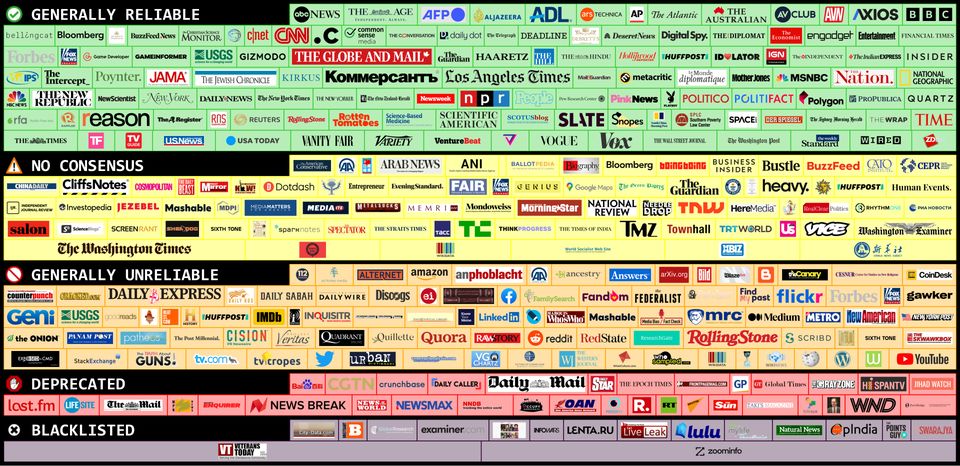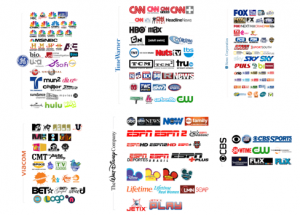Referencing
Historically information was scarce, now it is abundant. We used to be walking the desert desperate for information, now we have so much we don't know what to trust. Wikipedia has tried to combat this issue, by listing which sources are most reliable and excluding specific those which prefer clicks over fact:
However, the word reliable simply implies sources are not making things up, it does not take into account potential biases of each source or framing of issues to make it more digestible to specific consumers.
Imagine all the information fictional and non-fictional that could ever be produced was produced and available to anyone via the internet. Every fact would have an equal amount of arguments for and against it irrelevant of its source. Borges in his book The Library of Babel, created a thought experiment where all possible 410-page books of a certain format and character set are available to anyone. Essentially, within our own confines, this represents all knowledge humans could possibly produce. It would take several lifetimes for one person to read each and every book. Similarly, it would take multiple lifetimes to read everything on the internet, understand its source and bias and whittle out the truth. This is especially difficult as our media is being aggregated into oligopolies which often serve a specific agenda (see Figure 2).
Critical Appraisal
Primarily, the information we consume should be unbiased and as factual as possible (Figure 3). The closest and most abundant source of this are scientific journal articles. Articles go through an approval process, the editor receives an article then sends it out to other scientists, who provide feedback and recommend whether the paper should be published. This practice only became a requirement by most journals in the 1970s and ’80s and reduces poor science by:
- reducing information overload by eliminating irrelevant or weak studies.
- identifying the most relevant papers.
- distinguishing evidence from opinion, assumptions, misreporting, and belief.
- assessing the validity of the study.
- assessing the usefulness and clinical applicability of the study.
This is illustrated in Figure 4 and is the key filtering technique that Burnzero uses to write articles. In fact on every page, at the bottom is a section named Reference, by clicking on the link next to the individual referenced article ([1], [2], [3] etc) you will be taken to an abstract or full article which is only featured if it fits within the higher levels of this hierarchy. Therefore, no news sources are used, only verifiable scientific papers, the intention of this is to bring us closer to fact than fiction.

